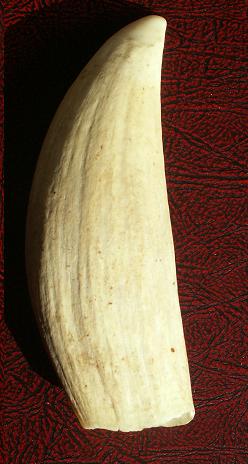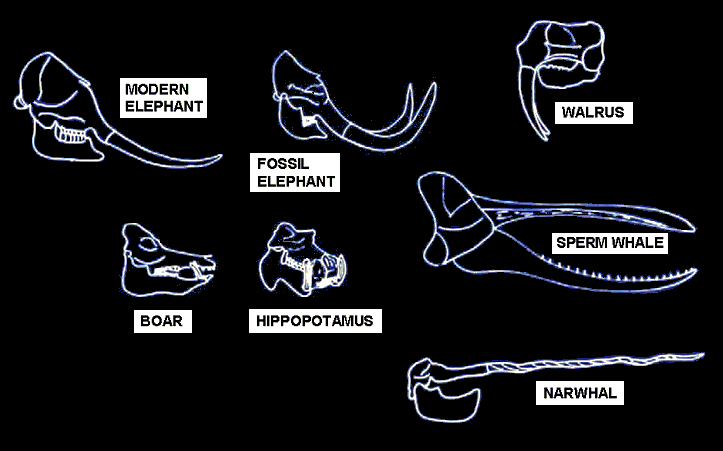Carvings and engravings – Several fine
carvings that depict flowers, animals and legends have been fashioned, many in Africa,
Europe, and Asia (especially in
China, India, Indonesia and Japan). A figurine, "Venus of Hohle Fels," that
is said to date back some 40,000 years and described as "The oldest
sculpture of a human being ... [, was] carved out of mammoth ivory"
(Curry, 2012). Inuit carvings from
walrus ivory have been used as amulets and fetishes
as well as for skinners and knives. An especially fine
"engraved
ivory ojime ...[showing] bamboo and a
sparrow" is illustrated in Dubin (1987, p.169). It is reported in a description of a
resin and limestone powder (+) replica now being marketed by, for
example, National Geographic, that "the famous Isle of Lewis chessmen,
[which] Historians believe... was carved in the 12th century in Norway
..." was "made mostly of walrus ivory." by One
of my
favorites, of which I have seen only a photograph, is the "hinged ivory
tusk [not otherwise identified] with mining scene carved in its
interior ... [which was carved in] Germany ca. 1850." that is in the
Harb and Monika Obodda collection (Huizing,2008). The Japanese
have given the name bachiru to ivory pieces that have been carved
through the outer
cementum layer of tusk to create a cameo effect. A different,
commercially oriented, kind of carving is shown as Figure D.
Inlay
–
Ivory is used as inlay on pieces such as
jewelry
chests and furniture. Particularly when
combined with ebony, such inlay often gives striking,
black and white contrasts.


